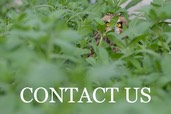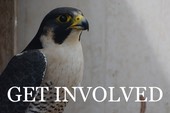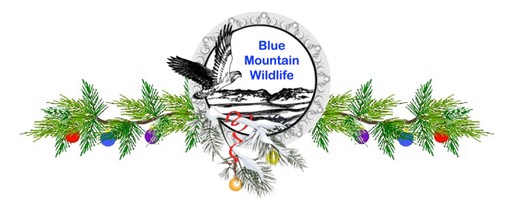
Merry Christmas and Warm Holiday wishes!!!
We celebrated the holidays with a Hawk a Release
Red-tailed Hawk 19-537 was found on November 3 at Scooteney Park near Connell, WA and rescued by volunteers Mike and Sarah. The hawk had been shot and had a hairline fracture in his right humerus near the elbow. He also had a blood lead level of 9.8 micrograms/deciliter. Lead levels tend to increase in birds that are healing from fractures, even when chelation is used to remove the lead. We suspect this happens because lead is pulled out of the bones, along with calcium, as the fracture heals. The lead was deposited in bones and other tissues when the bird ate carrion contaminated with lead.
The hawk's lead increased to 13.4 mcg/dl after one course of chelation even though calcium supplements were administered daily. We continued calcium supplementation for two weeks and then retested lead on November 27. The lead level had dropped to 8.7 mcg/dl without additional chelation. Unfortunately, the lead was not eliminated from the hawk’s body, but rather moved out of his blood stream into other tissues where chelation cannot remove it. The hawk has a second chance at life. Hopefully he will avoid people who want to shoot hawks and only scavenge carrion that has been shot with non-lead ammunition. Hunt Lead Free!
Volunteer Ailene released the hawk…
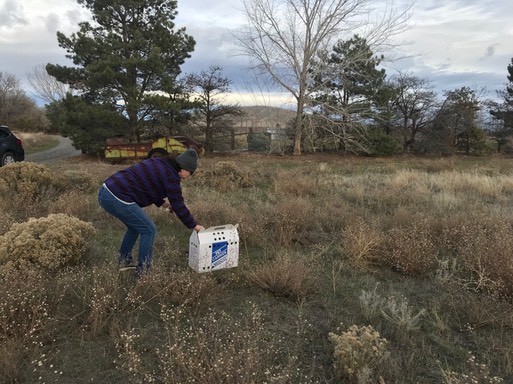
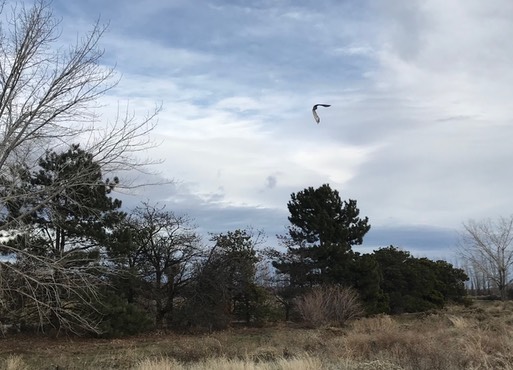
The Week in Review
There were just three admissions this past week, two Western Screech Owls and a Bald Eagle. Both owls had eye injuries - a common occurrence in owls due to their large, prominent eyes. Owl 19-575 was likely hit by a car. The impact resulted in a luxated (dislocated) lens in his right eye.
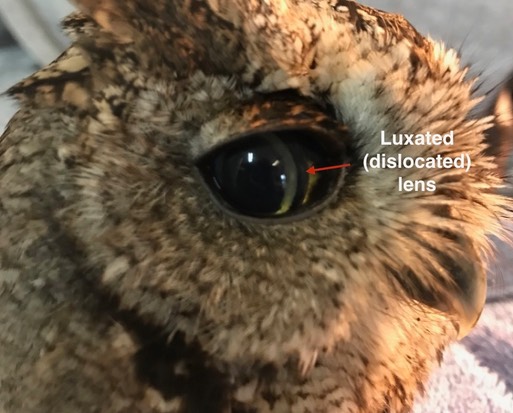
Bald Eagle 19-576: A Sad Story
A call came in last week from Janet and Jerry McKague, our neighbors when Bob and I lived up East Birch Creek. Janet had spotted a Bald Eagle that didn’t look quite right. It was perched on a stump across the creek from her house. She said the hillside was kind of steep, but Jerry could get me across the creek in his 4-wheel drive pick-up. I grabbed a net and a towel and we headed “up the crick.” As Bob drove, I reminded myself to take a picture of the eagle when we located him.
“Kind of steep” did not adequately describe the hillside where the eagle was perched. As I started climbing, thoughts of a picture were replaced with thoughts of how I was going to get down off the hillside if I was able to capture the eagle. The eagle could not fly, but was able to keep about 10 feet ahead of me. As I was beginning to close the distance he launched himself off the side of the hill and glided down to the bottom. The effort was too much. When we located him he was gasping for air. He died in the van on the way back to the clinic. We were able to get a blood sample and test for lead. His blood lead level was 47.8 mcg/dl. We have admitted eagles with much higher lead levels, but the effects of lead are quite variable and never good. There is little doubt the eagle’s death was the result of eating carrion that had been shot with lead ammunition. Preventing ingested lead toxicity is simple, Hunt Lead Free. To learn more about hunting with non-lead ammunition click HERE
